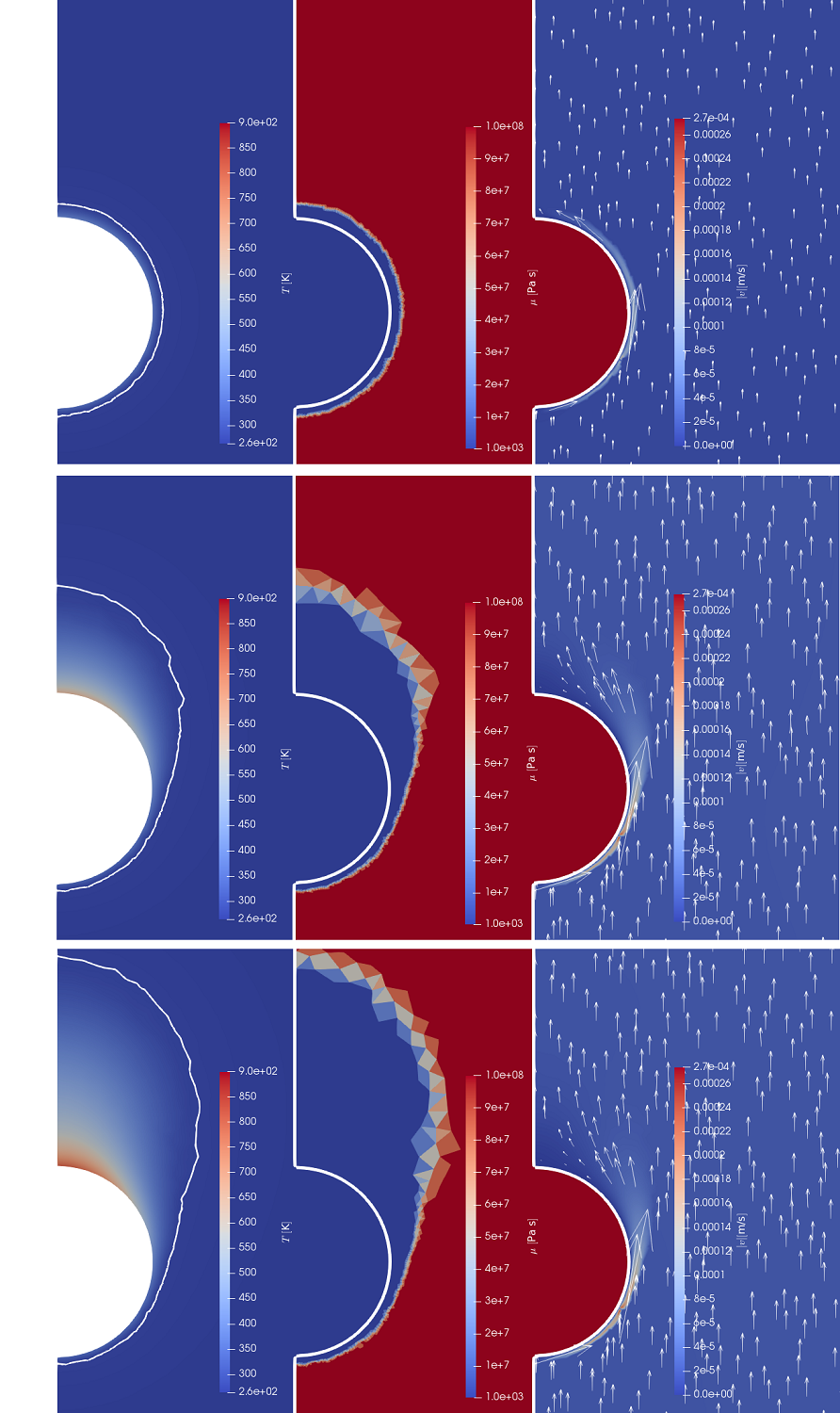Melting probe - thermomechanical modeling of descent rate
- Mathematical Institute of Charles University, Charles University, Prague, Czechia (malik@karlin.mff.cuni.cz)
Melting probe is an autonomous exploratory tool that uses heat, typically generated by a nuclear energy source, to penetrate through layers of ice. Working devices have been used in terrestrial conditions for some time, but the concept has a potential for space missions, especially those that aim to collect water samples from subsurface oceans on icy moons. This motivates computational study of the concept, one that could answer fundamental questions regarding time and power requirements of the melting probe mission.
In this talk, which presents results obtained in collaboration with Ondřej Souček, a multi-physics modelling approach will be introduced. The model couples a mechanical problem, governed by the Navier-Stokes equations with temperature dependent material properties, together with a thermal problem, in the form of a non-linear heat equation reformulated in enthalpy that is capable of capturing the phase-change phenomena. Though complex, the versatility of such model enables a study of the fully-convective regime of the melting probe. Preliminary results show that the coupled problem formulated in the axisymmetric two-dimensional approximation is (computationally) tractable and, at the same time, estimates the rate of ice penetration based on the external conditions, i.e., ice temperature and viscosity, gravitational acceleration, etc. The results form a foundation for possible kinematic models of ice sheet penetration that lead to estimates of mission time requirements.
So far, the problem was studied in the simple setting of a heated sphere with a fixed frame of reference (see Fig.1, Fig.2 for preliminary results of a test setting). The solution is approximated by the finite element method implemented within the FEniCS computational platform.
This stage, which serves as the model's proof of concept, permits straightforward generalizations (e.g., realistic cylindrical geometries, water jets boundary conditions, Arbitrary Lagrangian–Eulerian kinematic description). A brief discussion of the extensions will demonstrate the utility of the model.
Acknowledgement: The authors would like to express their gratitude toward Charles University Grant Agency, project GA UK n. 1062120 (J.M.) and Czech Science Foundation, project 22-20388S (O.S.).
Figure 1. Preliminary results - three time stamps show the evolution of temperature (including melting temperature isotherm), dynamic viscosity, and velocity field around the heated sphere (test problem parameters setting).
Figure 2. Preliminary results - time evolution of probe descent velocity
How to cite: Malík, J. and Souček, O.: Melting probe - thermomechanical modeling of descent rate, Europlanet Science Congress 2022, Granada, Spain, 18–23 Sep 2022, EPSC2022-337, https://doi.org/10.5194/epsc2022-337, 2022.

